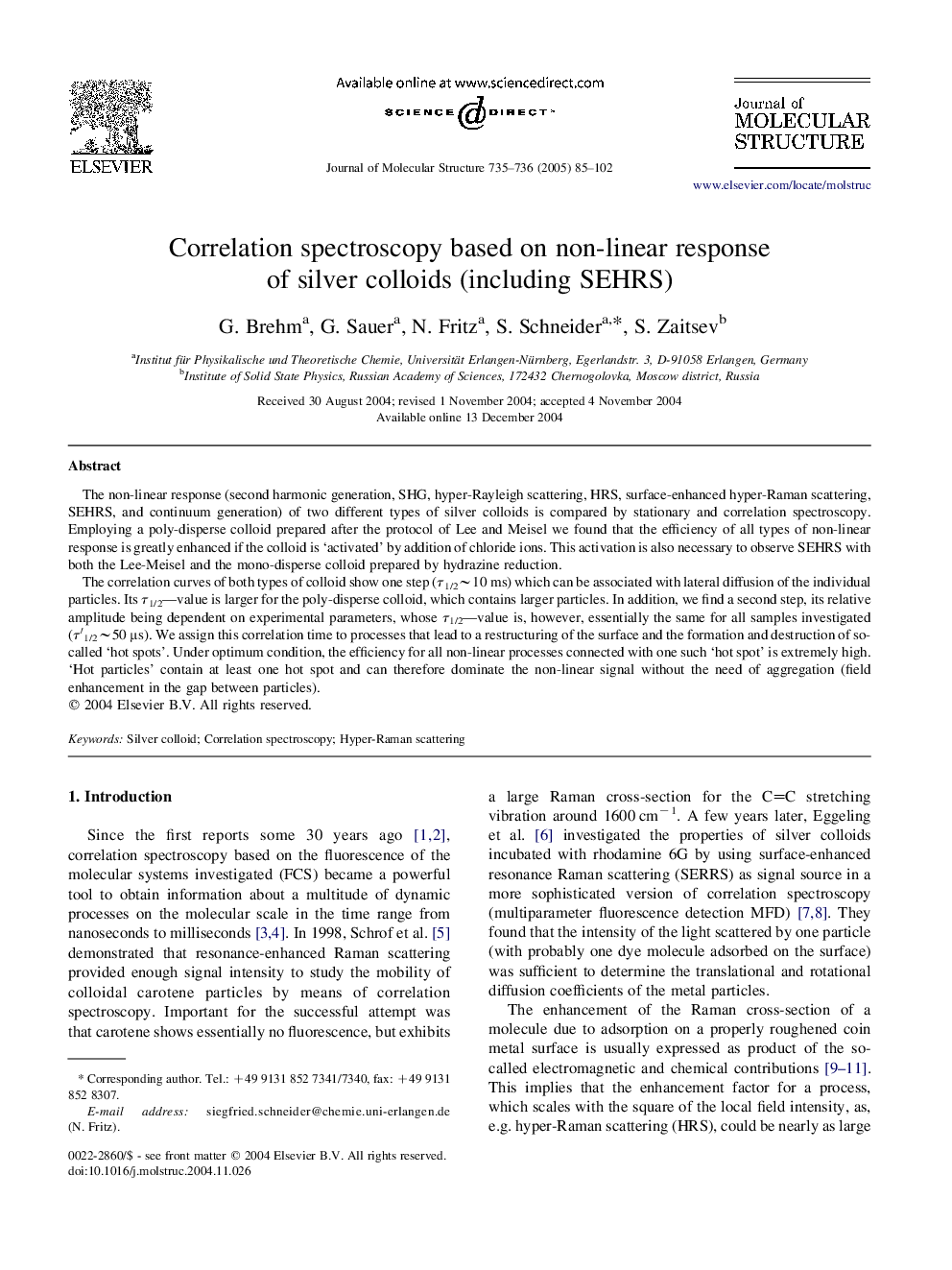| Article ID | Journal | Published Year | Pages | File Type |
|---|---|---|---|---|
| 9770386 | Journal of Molecular Structure | 2005 | 18 Pages |
Abstract
The correlation curves of both types of colloid show one step (Ï1/2â¼10 ms) which can be associated with lateral diffusion of the individual particles. Its Ï1/2-value is larger for the poly-disperse colloid, which contains larger particles. In addition, we find a second step, its relative amplitude being dependent on experimental parameters, whose Ï1/2-value is, however, essentially the same for all samples investigated (Ïâ²1/2â¼50 μs). We assign this correlation time to processes that lead to a restructuring of the surface and the formation and destruction of so-called 'hot spots'. Under optimum condition, the efficiency for all non-linear processes connected with one such 'hot spot' is extremely high. 'Hot particles' contain at least one hot spot and can therefore dominate the non-linear signal without the need of aggregation (field enhancement in the gap between particles).
Related Topics
Physical Sciences and Engineering
Chemistry
Organic Chemistry
Authors
G. Brehm, G. Sauer, N. Fritz, S. Schneider, S. Zaitsev,
